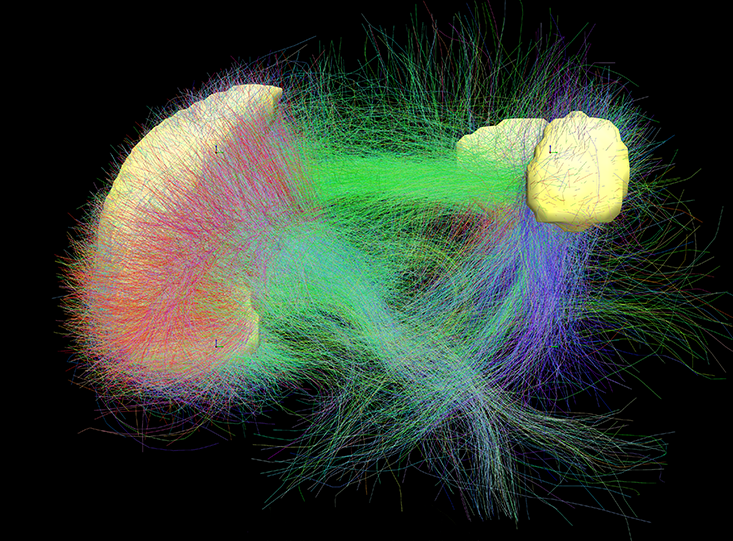What does boredom do to a man: the science of a wandering consciousness

“Every emotion has a goal from an evolutionary point of view,” says Sandy Mann, a psychologist and author of The Positive Side of Rest: Why Boredom Is Good [The Upside of Downtime: Why Boredom Is Good]. "I wanted to find out why we need such an emotion as boredom, seemingly negative and useless emotion."
So Mann began working in her specialty: boredom. Studying the emotions that appear in the workplace in the 1990s, she found that the second most often suppressed emotion after anger was - yes, yes - boredom. “They write bad things about her,” she says. “Almost everything is blamed for boredom.”
Immersed in the topic of boredom, Mann discovered that it is, in fact, "very interesting." And certainly not meaningless. Vizhnand van Tilburg of the University of Southampton explained the important evolutionary function of this disturbing and disgusting sensation: "Boredom makes people do things that they see more sense than the ones they have at their fingertips."

“Imagine a world in which we would not be bored,” says Mann. “We would constantly be pleased with anything — falling raindrops, cornflakes at breakfast.” Having dealt with the evolutionary sense of boredom, Mann wondered if she had any advantages other than a contribution to survival. “Instinctively,” she says, “I felt that everyone in life should be a little bored.”
Mann developed an experiment in which a group of participants was given the most boring task she could come up with: copying phone numbers from the phone book manually. (If someone has never seen phone books in their lives, google them). The test was based on the classical verification of creativity, developed in 1967 by J. P. Guilford, an American psychologist, one of the first researchers of creativity. In the original test by Guilford “checking alternative uses”, the subject is given two minutes to come up with as many alternative ways as possible to use everyday objects - cups, paper clips, chairs. In the Mann version, she anticipated a test of creativity by a 20-minute pointless task - copying phone numbers. After that, the subjects were asked to come up with as many ways as possible to use two paper cups. They gave a few ideas of average originality, such as flower pots and sandbox toys.
In the next experiment, Mann boosted the boring part. Instead of copying numbers from the phone book, the subjects had to read the numbers aloud. And although some of them did it with pleasure, after which they were removed from the room, most of the participants considered this activity extremely, quite boring. Getting into prostration is more difficult when you are busy with something active, like writing numbers, than when you are busy with such a passive act as reading. As a result, as Mann assumed, the subjects gave more creative ideas on the use of paper cups: earrings, telephones, musical instruments, and what she liked most was a Madonna-style bra. This group has already considered cups not only as containers.
With these experiments, Mann proved her point: bored people think more creatively than others.
But what happens during boredom that triggers your imagination? “Missing, we are looking for some kind of incentive that is not in close proximity to us,” explains Mann. - Therefore, we begin to look for incentives, sending our consciousness to travel to various places that are in our heads. This can stimulate creativity, because when you start dreaming and letting your mind wander, you go beyond the bounds of the conscious and go into the subconscious. This process allows you to create various links. And it's awesome. ”
Boredom opens the way to the wanderings of the mind, which helps our brain to create the very connections that can solve anything, from planning a dinner to a breakthrough in the fight against global warming. Researchers have only recently begun to deal with the phenomenon of wandering consciousness, the activity that our brain does when it does something boring, or does nothing. Most of the research on dreams came true in the last 10 years. With modern technologies of taking pictures of the brain, every day there are new discoveries of what our brain does not only when we are busy with something, but also when we are in prostration.
When we do something consciously - even if we write down numbers from the phone book - we use the “executive attention network” - the parts of the brain that control and suppress attention. As neuroscientist Markus Rachel says : “The attention network allows us to communicate directly with the world, here and now.” Conversely, when our mind wanders, we activate a part of the brain called the " network of the passive mode of the brain, " opened by Rachel. The passive mode of operation, so named Rachel, is used to describe the "resting brain"; that is, when we are not focused on an external task with clear goals. Therefore, unlike the generally accepted point of view, when we withdraw into ourselves, our mind does not turn off.
“From a scientific point of view, day-to-day dreams are an interesting phenomenon, because it determines the ability of people to create thoughts in a clean way, unlike thoughts that appear as a reaction to the events of the outside world,” says Jonathan Smallwood, who has studied the wandering mind from the very beginning career neuroscientist, started 20 years ago. It may not have been a coincidence that he received his doctorate the same year when the passive brain mode was discovered.
Smallwood — so enthusiastic about wandering around his mind that he picked up a nickname with that name on Twitter — explained why this area is still not very developed. “She has an interesting place in the history of psychology and neuroscience because of how cognitive science is organized. In most experiments and theories, we demonstrate something to the brain and see what happens. " In the past, for the most part, this task-based method has been used to understand how the brain works, and it has produced a wealth of knowledge about how to adapt to external stimuli. "Mind wandering holds a special place, as it does not fit into this series of phenomena," says Smallwood.
We are at a key point in the history of neurobiology, according to Smallwood, because with the advent of neuroimaging systems and other comprehensive tools for figuring out what is happening in the brain, we begin to understand the functioning that has eluded us. This includes our feelings during idleness.
The key role of dreaming became apparent to Smallwood as soon as he began to study it. Prostration is so important for us that “it can be the answer to the question that distinguishes us, humans, from less complex animals.” She participates in the work of a large number of skills, from creativity to predicting the future.

The network of the passive mode of the brain turns on when it is not concentrated on any task.
There is still so much to discover in this area, but what is already clear is that the passive mode does not mean the inaction of the brain. Smallwood uses functional magnetic resonance imaging (fMRI) to study the nerve changes that occur when the test subjects lie in the scanners and do nothing but consider a still image.
It turns out that in the passive mode, we use about 95% of the amount of energy that we spend with active thinking. Despite the lack of attention, our brain still does a lot of work. While people were lying in the scanners in the Smallwood experiment, their brains continued to "demonstrate very organized spontaneous activity."
“In principle, we do not understand why he is doing this,” he says. - When you have nothing to do, your thoughts do not stop. You keep generating thoughts, even if you have nothing to do with them. ”
Smallwood and the team in particular are working to unite this state of unlimited arbitrary thoughts and the state of organized spontaneous brain activity, since they consider them to be "two sides of the same coin."
The areas of the brain that make up the passive mode network — the mid-temporal lobe, the mid-prefrontal cortex, the posterior cingulate cortex — are turned off when we switch to tasks that need attention. But they take a very active part in the work of autobiographical memory, models of the human psyche (in fact, our ability to represent what other people think and feel), and what is unique is the processing of an image of oneself, that is, the creation of a coherent image of oneself.
When we digress from the outside world and dive into ourselves, we do not turn off. We are connecting to a huge amount of memory, presenting future opportunities, analyzing our interaction with other people, reflecting on who we are. It seems that we are wasting time, looking at the longest red light in the world, waiting for it to switch to green, but our brain builds ideas and events in the right order.
This is the essence of the differences between the wandering of consciousness and other forms of the work of thought. Instead of feeling, sorting and understanding things based on how they come to us from the outside, we do it inside our own cognitive system. This gives us the opportunity to think and better understand everything after the urgency of the moment has passed. Smallwood gives the argument as an example: while the argument is in progress, it is difficult to be objective or to look at everything from the point of view of another person. Anger, adrenaline, the physical and emotional presence of another person interfere with the analysis. But in the shower or at the wheel the next day, when your brain experiences what has happened, your thoughts become deeper. You not only think about a million variants of your answers, but, perhaps, without “the stimulus that the person with whom you argued with” is, you can look at everything from a different point of view and generate some ideas. Reflections about interpersonal interaction in a different way than what happens during a meeting in the real world are an excellent form of creativity, stimulated by the wandering consciousness.
“Daydreaming dreams are especially important for a species like us, with a high importance of social interaction,” Smallwood says. “All because the most unpredictable phenomenon in your daily life will be other people.” Our world, from traffic lights to cash desks in grocery stores, works according to a simple set of rules. Unlike people. “Dreams in reality reflect the need to understand the complex aspects of life that are almost always associated with other people.”
After talking with Professor Smallwood, I was even more convinced that filling in the free minutes of the day with email checks, Twitter updates or continuous phone checks is destructive. I understood why the willingness to let go of my mind to wander a little is the key to creativity and productivity.
“Well, this is a controversial statement,” said Smallwood. “People whose mind is always in prostration cannot do anything at all.”
Really. I didn’t like that Smallwood was holding back my enthusiasm, but waking dreams in reality were not always considered useful. Freud considered people with detached consciousness to be neurotic. Back in the 1960s, teachers were told that students were dreamers at risk of acquiring problems with psychological health.
Obviously, there are different ways to dream in reality - and not all of them are productive or positive. In the book The Inner World of Daydreaming, which contains fruitful ideas, psychologist Jerome Singer, who has been studying the wandering mind for more than 50 years, identifies three different dreaming styles:
- Uncontrollable attention.
- Dysphoric prostration with guilt syndrome.
- Positive constructive prostration.
Their names speak for themselves. People who are poorly able to manage their attention, are easily excited, easily distracted, it is difficult for them to concentrate even on their dreams in reality. When our wandering mind becomes dysphoric, our thoughts become counterproductive and negative. We scold ourselves for having forgotten someone's birthday, or for not being able to fight back someone at the right moment. We are overwhelmed by such emotions as guilt, anxiety and anger. Some people easily get stuck in this circle of negative thinking. Not surprisingly, this kind of mind wander is more common in people who complain of a chronic level of unhappiness.
When dysphoric prostration turns into chronic, people may tend to destructive behavior - depending on gambling, chemicals or food. The only question is how the wandering of thoughts manifests itself in people complaining about the chronic level of unhappiness - does it just manifest itself more often, or else it contributes to the deterioration of mood. In a 2010 study, “Mind Wandering - Unhappy Mind,” Harvard psychologists Matthew Killingworth and Daniel Gilbert developed an iPhone app designed to monitor the thoughts, feelings, and actions of 5,000 people at any given time during the day. The application beeped at random times, and the subject answered questions that affected his actions, thoughts about these actions, the level of happiness, and other things. According to observations, Killingworth and Gilbert found that "people do not think about what is happening, almost as often as they think about what is happening", and "usually such thoughts make them unhappy."
This can be heard in any class in yoga - the key to happiness lies in living in the current moment. So how is everything in reality? Is wandering mind productive or destroying itself? Apparently, like everything in this life, dreams come true - a complex and many-sided thing.
Smallwood participated in a study of the relationship between mood and mind wandering, from which it was concluded that "the generation of thoughts that are not related to the current environment can be both a cause and a consequence of unhappiness." I'm sorry, what!?
A 2013 study (Florence JM Ruby, Haakon Engen, Tania Singer) states that not all types of detached reflections or dreams in reality are the same. The data collected from hundreds of participants showed whether their thoughts were related to the current task, whether they focused on the past or the future, whether they were thinking of themselves or others in a positive or negative way. The study found that negative thoughts caused a negative mood (of course). Depressed thoughts of people in depression were both the cause and effect of negative moods, and "thoughts associated with the past are particularly likely to be associated with a bad mood." But there is still hope - the study also found that "thoughts associated with the future and with oneself preceded mood improvements, even if the current thoughts were negative."
“Dream dreams have features that allow us to think about our lives in an unusual way,” Smallwood told me. “But in certain situations, you probably shouldn't keep thinking about the same thing.” Many states of chronic unhappiness are probably related to the wandering of the mind simply because these problems cannot be solved. ”

Dreams in reality are similar to smartphones so that it is easy to overdo it with such a pastime. Smallwood argues that we don’t need to think about how our phones or our brains work in terms of "good" or "bad." The thing is how we use them. “Smartphones allow us to do amazing things - for example, to communicate with people who are at a great distance, but we can fall into the trap by dedicating our whole lives to them,” he says. “And this is not the fault of smartphones.” Dreams in reality allow us to take a different look at things - is it good or bad, but, more importantly, differently.
The reverse side of dysphoric prostration, a positively constructive variety, occurs when our thoughts take a creative direction. We begin to rejoice at the opportunities that our brain can mentally evoke almost nowhere, like magic. This mode of wandering mind reflects our inner desire to explore ideas and feelings, plan, solve problems.
How to do a healthy mind wanderings? Let's say you quarreled with a colleague. In the evening, when you cut a salad for yourself, you find that you constantly lose this scene in your head over and over again. Waves of anger roll over you, and you scold yourself for not having come up with some smarter response to his unwarranted statement that you did not invest in the last project at 100%. By applying positive and constructive abstract thinking, you say goodbye to the past and come up with a way to show him how much you actually have to work for your joint projects. Or you decide to go to another team and no longer communicate with this goat, because life is too short.
“Changing the mindset is harder than talking about it,” said Smallwood. — , - , , . , , , , . , , ».
, , , - , , , , — , . , , , .
, , « ». — , . , . — .
, . , , , ; , . , , , , , . , .
, , , , , : « , , ». 2014 « » [The Bright Side of Boredom], , « , . , . — , , , , ».
, — . , , , , , . . «» , . . . , , « , , , , , ». , , . «! », — 1968 . « , , , : „ - “. -. , : „ . — , , “. , Apple, Wired, , , , „ “, , , .
. . , . , , , , , ?
„ “ [Bored and Brilliant], 2017.
All Articles